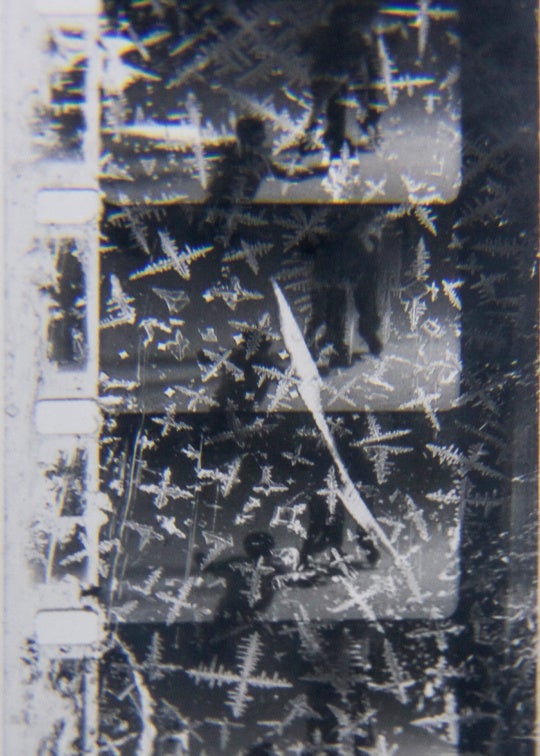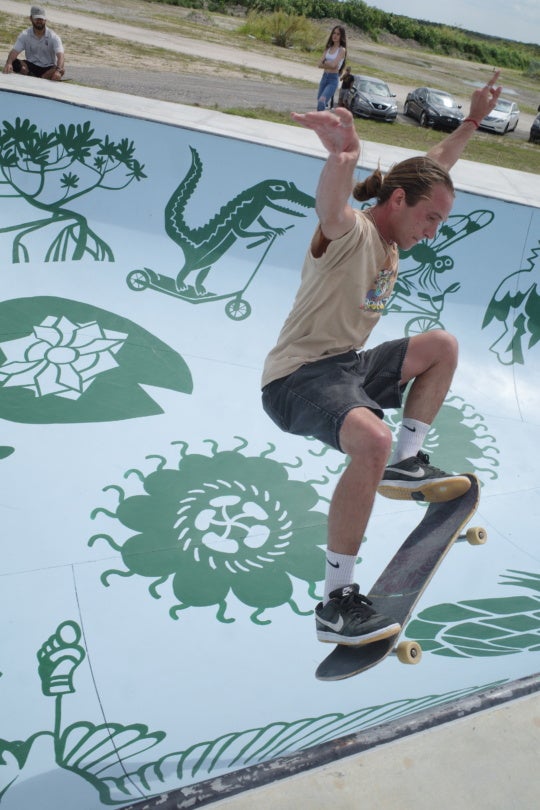
The idea for BURNAWAY originated from a front-porch conversation about the need for more dialogue about local art. Please welcome Chase Martin, director of Institute 193 in Lexington, KY and today’s guest writer of Our Front Porch.
After a stint in Chicago, I moved back to Lexington in 2011 to work at Institute 193, an organization that produces exhibitions, publications, and other projects that document the cultural landscape of the modern South, with a particular emphasis on contemporary visual artists from Kentucky.
For a city of its size and demographics—a well-educated metro population just under half a million—it’s puzzling that the city of Lexington lacks a lot of cultural infrastructure. We don’t have any museums or institutions that effectively create a local dialogue about contemporary art, or champion the innovative art and music that emerges here.
However, in just the past few years, the city has begun to experience something of a cultural reinvigoration. New restaurants, bars, coffeehouses, and breweries—West Sixth Brewing, County Club, Arcadium, North Lime Coffee, Table 310—are breathing some life into the city’s most walkable neighborhoods downtown and on the north side. Smiley Pete Publishing even launched a new online calendar to track the wave of new entertainment options. Bike racks and IPAs don’t necessarily translate into a healthy arts scene, but a series of planned projects promise to seriously shake up the local culture beat.
This year, construction will begin on a 21c Museum Hotel in downtown Lexington, one of a chain that exhibits blue-chip contemporary art from the collection of founders Laura Lee Brown and Steve Wilson. Just blocks away from the 21c location, the city is planning to create an arts and entertainment district near the downtown arena and convention center.
Perhaps most exciting of all, LexArts and the North Limestone Cultural Development Corporation recently teamed up to apply for a national Artspace grant funding the renovation of an old hemp factory as well as a number of shotgun cottages and transforming them into a complex offering exhibition space, a home ownership program for local artists, and a national artists-in-residence program. They were awarded over $400,000 for the project.
Lexington is also not at all lacking in world-class talent. Many of the artists who live here are making challenging and sophisticated work in a variety of media.
Take, for example, Robert Beatty, a prolific visual artist, designer, and noise music pioneer. Last I checked, Beatty was making a series of sculptures of ostrich eggs strapped into harnesses of white leather. Beatty has designed hundreds of record covers for musicians all over the world, many of which display an instantly recognizable aesthetic that draws on retro science fiction and lo-fi geometry. He’s collaborated with other artists (such as Takeshi Murata) on video work and recently designed the publication Kramer’s Ergot #8. He makes music under the moniker Three Legged Race, and is also a founding member of the band Hair Police and the artist/musician collective Resonant Hole.

One of my first tasks at Institute 193 was helping Beatty arrange a mountain of old televisions into an installation that played an eerie video on loop, the sound routed through a telephone receiver. On weekends, I’d leave the installation playing so that passers-by could see it from the gallery’s front window. On Mondays, that window was covered with oily smudges from all the people who’d been peering inside, wondering just what the hell was going on in there.
Another artist, Mike Goodlett, lives 45 minutes outside Lexington in an isolated farmhouse in Jessamine County. His meticulous, elegant drawings, sometimes stitched with thread, are some of the most compelling pieces of art I’ve ever seen anywhere. He’s recently begun experimenting with plaster casts in spandex molds that rework imagery gleaned from pornography into graceful, abstracted shapes.

It’s an exciting time to be in Lexington. The city feels like it’s on the cusp of something, and I like to think that Institute 193 has helped to anchor some part of its small but sophisticated arts community.
My questions for the Front Porch:
How can a city’s infrastructure help and/or hinder the growth of arts communities?
What role should museums and institutions play in orienting local art scenes to other national and international art centers? And if no museums exist, how does this alter the city’s arts infrastructure altogether?
Chase Martin is a writer and curator based in Lexington, Kentucky. He is the director of Institute 193. Our Front Porch is a series inviting guest contributors to share thoughts on local art for open discussion with you, our readers.
House rules for commenting:
1. Please use a full first name. We do not support hiding behind anonymity.
2. All comments on BURNAWAY are moderated. Please be patient—we’ll do our best to keep up, but sometimes it may take us a bit to get to all of them.
3. BURNAWAY reserves the right to refuse or reject comments.
4. We support critically engaged arguments (both positive and negative), but please don’t be a jerk, ok? Comments should never be personally offensive in nature.




